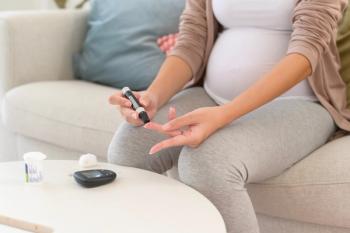
New Acute Otitis Media Treatment Guidelines Released
The American Academy of Pediatrics and American Academy of Family Physicians have updated their acute otitis media treatment guidelines for the first time in almost a decade.
The American Academy of Pediatrics and American Academy of Family Physicians have updated their acute otitis media treatment guidelines for the first time in almost a decade.
The American Academy of Pediatrics (AAP) and American Academy of Family Physicians have jointly released updated evidence-based clinical practice guidelines for management of uncomplicated acute otitis media (AOM) in children aged 6 months to 12 years. The
The guidelines note that between 1995-1996 and 2005-2006, office visits for AOM decreased more than 30%, but the portion of visits that resulted in a prescription for an antibiotic remained roughly the same (approximately 76%). To explain the reduction in office visits for AOM, the guidelines cite factors including insurance barriers, educational campaigns informing the public of the viral nature of most infection, increased vaccination with the 7-valent pneumococcal conjugate (PCV7) vaccine, and increased coverage with the seasonal influenza vaccine. The guidelines also note that physicians have proved hesitant to follow the 2004 recommendations, which were the first to suggest that observation without antibiotic therapy could be an appropriate approach.
In terms of microbiology and treatment, the guidelines report that nontypeable
Haemophilus
influenzae,
Streptococcus
pneumoniae, and Moraxella catarrhalis remain the 3 most common pathogens causing AOM. H influenzae replaced S pneumoniae as the most frequently isolated middle ear pathogen in children after the PCV7 vaccine was introduced. Further changes are expected as uptake of the 13-valent pneumococcal conjugate (PCV13) vaccine increases. Almost half of all AOM is now caused by H influenzae, the guidelines note, and AOM associated with conjunctivitis is more likely to be caused by H influenzae than other bacteria. Of note, an H influenzae protein D-conjugate vaccine recently released in Europe may protect against 10 serotypes of S pneumoniae as well as nontypeable H influenzae.
The guidelines include numerous key action statements. Of greatest interest to pharmacists are the recommendations to aggressively look for pain and to prescribe an antibiotic or offer observation with close follow-up if children have no severe signs or symptoms. Clinicians should make the decision to use observation only if the parents or caregivers agree. In these cases, a mechanism must be in place to follow up and initiate antibiotics if the patient fails to improve or worsens within 48 to 72 hours.
The guidelines recommend use of amoxicillin provided that the child has not taken the medication in the previous 30 days and does not have purulent conjunctivitis. If either of those 2 conditions apply, an antibiotic with beta-lactamase coverage is preferred. Vaccines, of course, are recommended in accordance with CDC schedules.
Ms. Wick is a visiting professor at the University of Connecticut School of Pharmacy and a freelance writer from Virginia.
Newsletter
Stay informed on drug updates, treatment guidelines, and pharmacy practice trends—subscribe to Pharmacy Times for weekly clinical insights.








































































































































































































